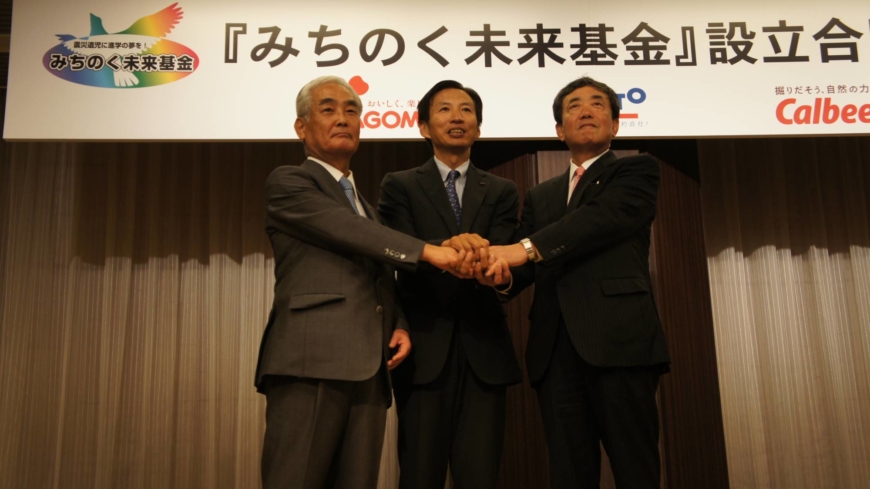[ad_1]
The Great East Japan Earthquake on March 11, 2011, caused the deaths of 15,899 people and left 2,529 unaccounted for, mostly in Miyagi, Iwate and Fukushima prefectures in the Tohoku region.
It also left 1,756 children without a father or mother, or both, according to a 2015 report by the Health, Labor and Welfare Ministry.
In response, Rohto Pharmaceutical Co. teamed up with Kagome Co. and Calbee Inc. to establish the Michinoku Future Fund, which supports those children financially so they can move on to attain higher education after graduating from high school.
“Our company is based in Osaka and experienced the Great Hanshin-Awaji Earthquake (in 1995). At that time, our Chairman, Kunio Yamada, felt so sad to see a lot of kids choose not to return to the damaged area even after the recovery,’’ said Haruna Shibata of Rohto’s Public Relations and Creating Shared Value Division, who was temporarily transferred to the fund’s office from 2015 to 2017. “When the 3/11 disaster happened, Yamada wanted to support children who would be the center of the recovery effort in the future.’’
Rohto built a support team in March 2011 to research the needs of the disaster-hit areas in Tohoku. Then they determined that supporting children financially and helping them advance to university or vocational school after high school was the most significant thing they could do as a private company.
The Michinoku Future Fund is designed to provide up to ¥3 million per year of the children’s university fees. The fund also supports children who had not yet been born at the time of the quake, meaning the fund’s sup-port will cover a span of about 25 years from 2011 until all eligible children graduate from their chosen institutions. Those students who receive the support do not have to pay the money back.
The fund was helping 901 children as of December, and an estimated 500 more will receive it in the next 15 years.
By Sept. 30 last year, the fund had gathered about ¥4.8 billion for the fund from about 3,200 companies and organizations, as well as 16,000 individuals. This is enough to surpass the estimated ¥4.4 billion needed to support the Tohoku children for 25 years. The fund stopped accepting donations on Feb. 20.
‘‘It is so crucial that the financial support not get interrupted (during the 25-year span),†said Shibata’s colleague Shintaro Fujita, who helped establish the fund in 2011. “The cooperation by multiple companies was necessary so the support would not be affected by a company’s financial performance. We’re happy that we have gotten so many companies to join our fund. Establishing that plan is one of the successes of the past 10 years.
“The children we have supported had clear memories of the disaster, but among those who we’ll support in the next 25 years, some don’t remember the quake much or don’t remember even their parents’ faces,’’ Fujita added. “We want them to enjoy normal school life without any financial concerns. Our support does not need to stand out. We just would like them to grow up as well as those who still have parents to take care of them.’’
Download the PDF of this Bosai Special
[ad_2]
Source link






